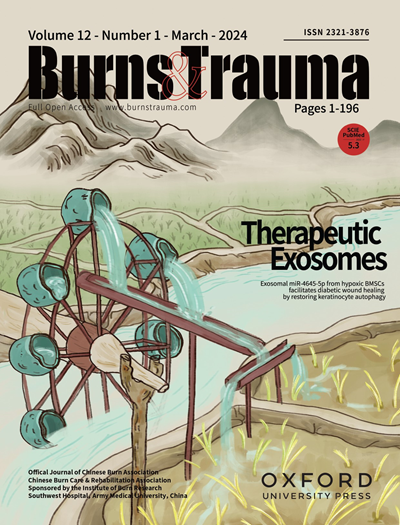Sebaceous gland organoid engineering
IF 6.3
1区 医学
Q1 DERMATOLOGY
引用次数: 0
Abstract
Sebaceous glands (SGs), as holocrine-secreting appendages, lubricate the skin and play a central role in the skin barrier. Large full-thickness skin defects cause overall architecture disruption and SG loss. However, an effective strategy for SG regeneration is lacking. Organoids are 3D multicellular structures that replicate key anatomical and functional characteristics of in vivo tissues and exhibit great potential in regenerative medicine. Recently, considerable progress has been made in developing reliable procedures for SG organoids and existing SG organoids recapitulate the main morphological, structural and functional features of their in vivo counterparts. Engineering approaches empower researchers to manipulate cell behaviors, the surrounding environment and cell–environment crosstalk within the culture system as needed. These techniques can be applied to the SG organoid culture system to generate functionally more competent SG organoids. This review aims to provide an overview of recent advancements in SG organoid engineering. It highlights some potential strategies for SG organoid functionalization that are promising to forge a platform for engineering vascularized, innervated, immune-interactive and lipogenic SG organoids. We anticipate that this review will not only contribute to improving our understanding of SG biology and regeneration but also facilitate the transition of the SG organoid from laboratory research to a feasible clinical application.皮脂腺类器官工程
皮脂腺(SG)是分泌全分泌物的附属器官,可润滑皮肤并在皮肤屏障中发挥核心作用。大面积全厚皮肤缺损会导致整体结构破坏和皮脂腺脱落。然而,目前还缺乏有效的 SG 再生策略。有机体是一种三维多细胞结构,可复制体内组织的关键解剖和功能特征,在再生医学方面具有巨大潜力。最近,在开发 SG 有机体的可靠程序方面取得了很大进展,现有的 SG 有机体再现了其体内对应组织的主要形态、结构和功能特征。工程学方法使研究人员有能力根据需要在培养系统内操纵细胞行为、周围环境和细胞-环境串扰。这些技术可应用于 SG 有机体培养系统,生成功能更强的 SG 有机体。本综述旨在概述 SG 有机体工程学的最新进展。它强调了一些潜在的 SG 有机体功能化策略,这些策略有望为血管化、神经支配、免疫交互和脂肪生成的 SG 有机体工程提供一个平台。我们希望这篇综述不仅有助于加深我们对 SG 生物学和再生的理解,还能促进 SG 有机体从实验室研究过渡到可行的临床应用。
本文章由计算机程序翻译,如有差异,请以英文原文为准。
求助全文
约1分钟内获得全文
求助全文
来源期刊

Burns & Trauma
医学-皮肤病学
CiteScore
8.40
自引率
9.40%
发文量
186
审稿时长
6 weeks
期刊介绍:
The first open access journal in the field of burns and trauma injury in the Asia-Pacific region, Burns & Trauma publishes the latest developments in basic, clinical and translational research in the field. With a special focus on prevention, clinical treatment and basic research, the journal welcomes submissions in various aspects of biomaterials, tissue engineering, stem cells, critical care, immunobiology, skin transplantation, and the prevention and regeneration of burns and trauma injuries. With an expert Editorial Board and a team of dedicated scientific editors, the journal enjoys a large readership and is supported by Southwest Hospital, which covers authors'' article processing charges.
 求助内容:
求助内容: 应助结果提醒方式:
应助结果提醒方式:


